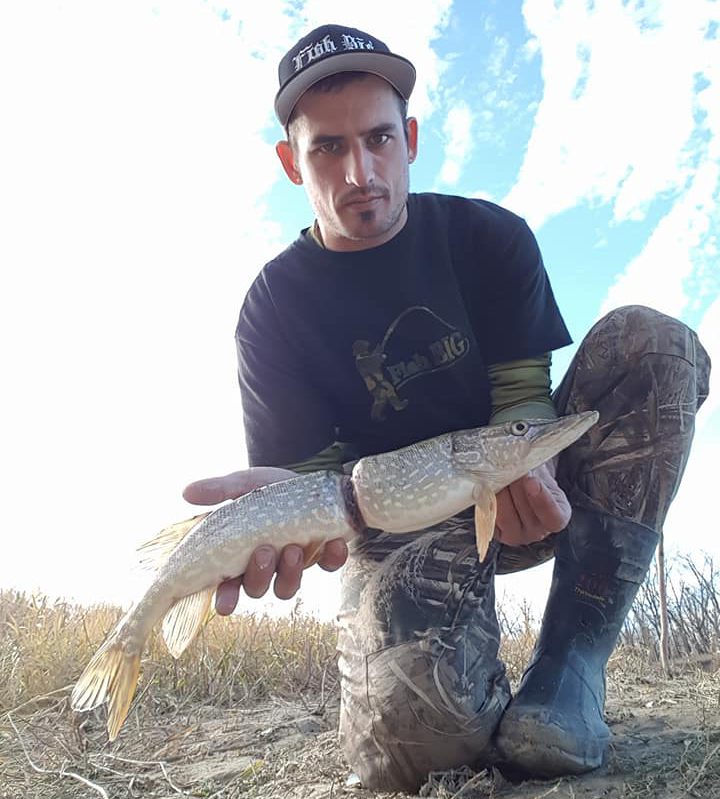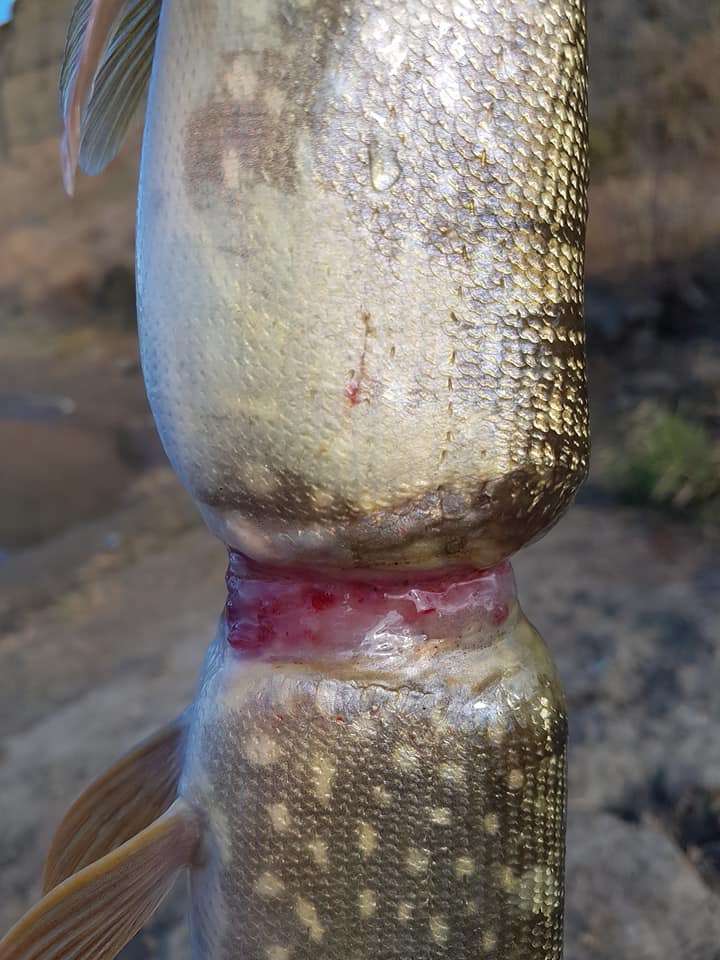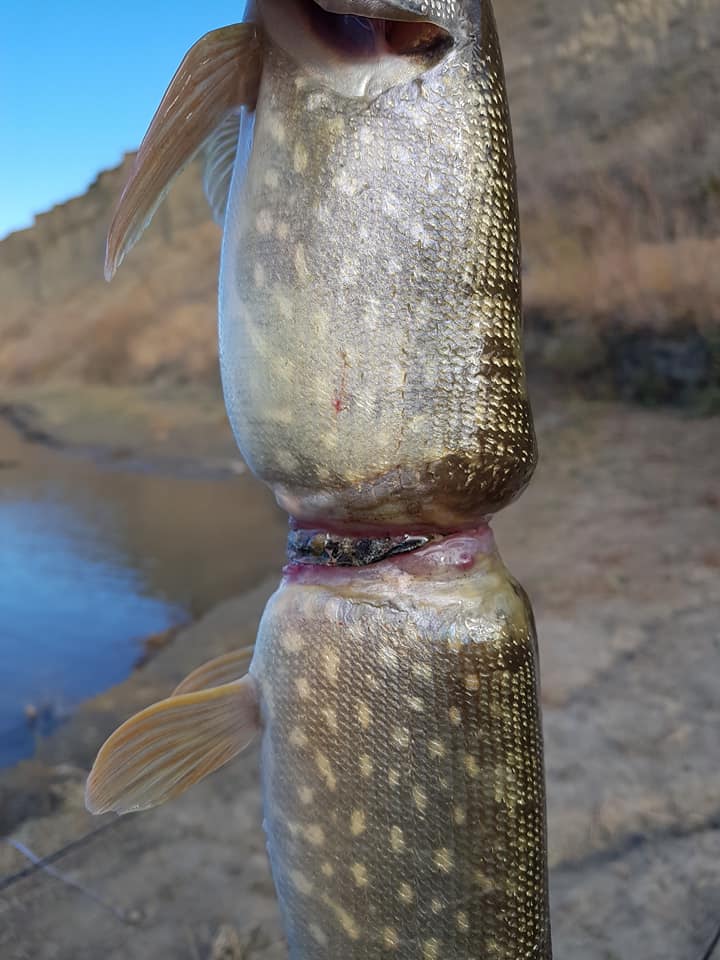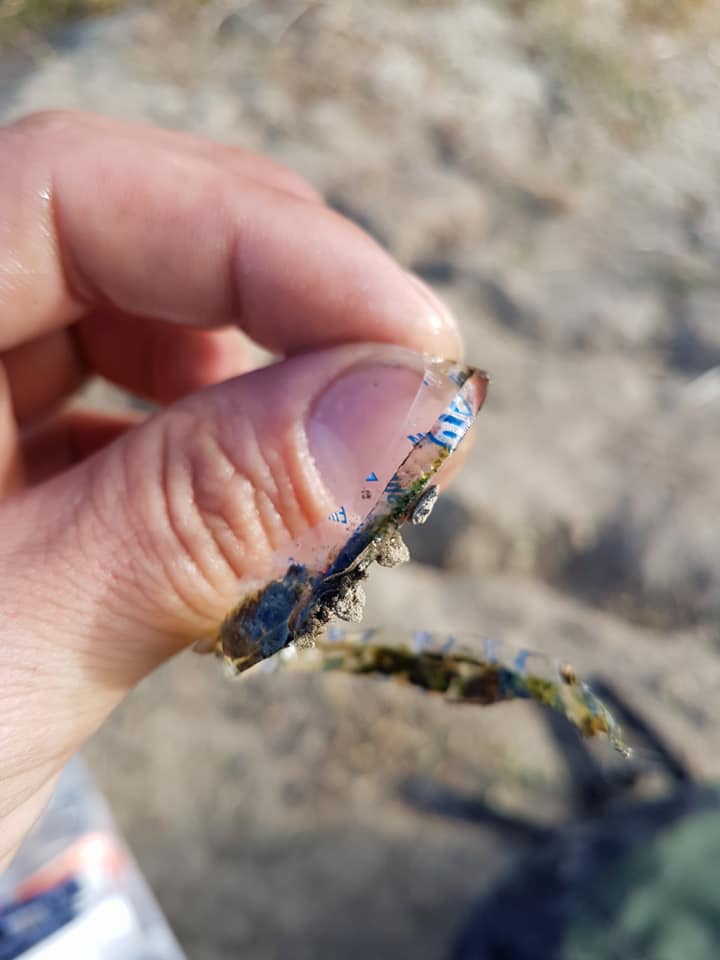An Alberta fisherman is reminding people to properly dispose of garbage after catching a fish that had been trapped in a drink ring for so long the fish had grown around the piece of plastic.

Adam Turnbull — originally from Sarnia, Ont., but now living in southeastern Alberta — works as a cabinet maker in Medicine Hat to support his real passion: fishing. The avid angler says he fishes almost daily, all around Alberta but mainly close to home.
He’s caught all kinds of fish before, but one he reeled in on Saturday, Oct. 28, from the South Saskatchewan River in Medicine Hat, left him shaking his head.
“I was fishing at Strathcona Park when I hooked the fish,” Turnbull, 28, told Global News. “It fought like every other fish and then I saw the wound.”
At first, he thought the Northern Pike — also known as a jackfish — had been attacked by another fish, until he got a closer look.
WATCH: Pike caught frozen in ice while trying to eat a bass
“I picked the fish out of the water and noticed the wrapper.”
There was a Powerade drink wrapper tightly coiled around the midsection of the Pike, but the fish just grew around it. The flesh around the plastic appeared raw and irritated, lacking scales found on the rest of the animal’s body.
He said he grabbed a small pair of scissors and carefully removed the plastic. He then held the fish back in the river to make sure it was OK, and it darted away.
READ MORE: B.C. photographer captures rescue of bald eagle trapped in snare
Turnbull said he had never seen anything like it before. He spoke to a biologist who said the wrapper appeared to be squeezing the fish behind the stomach, on the intestines.
“Which would have allowed the fish to eat properly, with slower digestion,” Turnbull explained.
“Basically the entire reason this fish survived. If it had been located an inch or two forward, the fish would have likely never fed.”
A fisheries scientist with Alberta Environment and Parks saw the photo Turnbull shared on Facebook.
“It looked like it had swam into it when it was small and actually grew around it,” Michael Sullivan said. “Amazingly enough, it didn’t constrict the guts or blood system at all, so the fish could actually grow around it.”
Sullivan said most biologists who work near water have seen similar instances first-hand.
“We’ve seen loons tangled in fish line, ducks with their heads through six-pack holders, plastic bags wrapped around fish. It’s a bad thing.”
“Luckily, they’re rare instances, but we’re concerned that’s the tip of the plastic iceberg.”
He added it’s the plastics that are not seen that are truly worrisome.
“We see it inside the stomachs of Northern Pike eating pop bottles and if you go really small, you can see it in the stomachs of fish that have eaten the plastic — it’s called either micro-beads, little tiny pieces — or fairly large pieces called nerdles.
“That’s the grotesque thing about plastics — they’re going to be around with us for thousands and thousands of years,” Sullivan said. “The only way to get rid of it is to stop putting it in the water.”
With the obstruction removed, Turnbull said the biologist he spoke to believes the fish will thrive. He said it was an eye-opening experience on how a small piece of trash can have a huge impact on an animal’s life.
READ MORE: Animal lover furious after beaver found trapped in Calgary park
“I mean, for any person to claim they’ve never littered intentionally or unintentionally would be a lie for most of us,” Turnbull said.
“But seeing what it does first-hand makes you really want to grab that piece of garbage you see laying on the ground, whether it was yours or not.”
He posted photos of the fish on Facebook, saying “Pick up your garbage. This is a Powerade wrapper which takes up no room in your pocket until you get to a garbage can. Please share!”
As of Tuesday morning, the post had been shared over 12,000 times, had over 1,900 reactions and more than 300 comments.
“If you see someone throwing plastic in, publicly shame them! Tell them they’re a jerk and pick it up for them. Make people feel guilty if they’re throwing their coffee cups into the river… they should feel guilty.”
He praised people for keeping the river valley clean, recycling and disposing of garbage properly, but stressed there’s more to be done.
“Obviously that fish told us that.”
READ MORE: Australian photographer captures bizarre photos of fish ‘trapped’ inside a jellyfish
According to Alberta Environment and Parks, Northern Pike can grow up to 22 kilograms, or 50 pounds.
— With files from Emily Mertz
- Invasive strep: ‘Don’t wait’ to seek care, N.S. woman warns on long road to recovery
- Ontario First Nation declares state of emergency amid skyrocketing benzene levels
- Do Canadians have an appetite for electric vehicles? Experts are divided
- Nearly 200 fossil fuel, chemical lobbyists to join plastic treaty talks in Ottawa








Comments